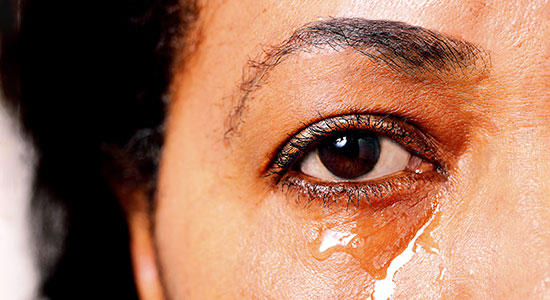
This article was updated on Aug. 10, 2020.
Aug. 5, 2020 – Judges and lawyers are often exposed to graphic images, videos, and testimony used as evidence in criminal trials. Their jobs require them – and they are trained – to process dark details, then move to the next case. But what about jurors?
Every day, jurors are summoned for jury duty, and some of them will be called upon to hear details of horrific crimes, including crimes of murder and sexual assault. It’s a civic duty, not a job, a duty that many citizens are not prepared or trained to endure.
One recent article notes that “a solid body of research now shows that traumatic stress resulting from exposure to disturbing, gruesome, and/or emotional courtroom testimony and other circumstances related to jury duty can lead to jurors experiencing symptoms associated with psychological trauma and stressrelated disorders.”1
Exposure to details of dark crimes may be enough to haunt jurors for months, or even years. But other elements of jury service can lead to short- and long-term trauma, too. Should court systems do more to help jury members with post-trial-related trauma?
Multiple Stressors
One juror in Dane County sat for a two-week homicide trial in 2019. The defendant admitted killing a man and wrapping him in carpeting, but he argued self-defense. It was a bizarre tale that led to the jury verdict: guilty of first degree murder.
 Joe Forward, Saint Louis Univ. School of Law 2010, is a legal writer for the State Bar of Wisconsin, Madison. He can be reached by email or by phone at (608) 250-6161.
Joe Forward, Saint Louis Univ. School of Law 2010, is a legal writer for the State Bar of Wisconsin, Madison. He can be reached by email or by phone at (608) 250-6161.
“Being a juror in a homicide case is stressful,” said the juror (let’s call her “Rebecca”). You see the dark side of human behavior. But it’s also the context and conditions of serving. Being in a small room for two weeks with other members of the jury without being able to talk with anyone about the case until deliberation increases stress.”
Beyond that, the jury is deciding someone’s fate in cases that are not cut and dry – juries must toil on the question of whether the state has met its burden of proof.
In addition, jurors must listen intently to the facts presented – sometimes disturbing images – and try to make sense of them amid objections and other maneuvering.
Differing perceptions of facts and credibility may lead to stressful conflict among jurors. What’s more, the facts of a case could trigger memories of personal trauma.
Currently, and for the foreseeable future, jurors summoned to courthouses for jury trial – in courthouses where in-person jury trials have resumed (or will) – have the added stress of fulfilling their civic duty amid the ongoing coronavirus (COVID-19) pandemic.
Numerous aspects of trials can affect jurors both during and long after the trial takes place. Former Dane County Circuit Court Judge Jill Karofsky – recently sworn as the next justice on the Wisconsin Supreme Court – has long acknowledged juror trauma.
In 2018, she recognized it in a tough homicide trial. “All week long, I could see the jurors getting more and more stressed out,” she said. “I could see it in their faces – these people are traumatized. At the end, what I most feared was going to happen, happened.
“They were deliberating and reached a verdict at 10 p.m. on a Friday night and they were all very tired,” Karofsky said. “The case was over. After I excused them, they went out into the night without ever having a chance to process the experience.”
Deliberating the Deliberation
Another Dane County juror (let’s call her “Kim”) said her jury freed a man on charges of sexual assault of a 14-year-old girl. They had formed a relationship, and the evidence involved mostly graphic sexual testimony and communications between them.
“I felt like I wasn’t mentally prepared for the graphic descriptions of the sex, the confusion about following the text messages and Facebook messages, and I wasn’t prepared for the emotions of this young girl on the stand,” Kim said.
“Some of the descriptions, I never heard in my life. And the story as a whole is very displacing because you don’t think these things can exist so close to home.”
Kim felt unprepared for the emotional impact of it. “The weight of our decision felt so massive,” Kim said. “We were asked to decide the fate of both of these people.”
During 12 hours of deliberation, the jury sat in a tiny, windowless room. “At first, nine voted not guilty and three of us voted guilty. Then it was 10 for not guilty,” she said. “Ultimately, we all got to not guilty, but the process of getting there was exhausting.”
A relationship was clear, Kim said, but other bizarre facts and circumstances made the jury question whether the state had made its case on the charges.
“The men outnumbered the women and it was sort of the women against the men,” said Kim, recalling the jury deliberations. “At the end, we were just so sick of each other.”
The trial judge relieved the jurors, and security escorted them to their cars. That was it. But when Kim got home, she looked into the defendant’s criminal background. “I thought we had set free someone who was guilty,” she said. “I cried a lot.”
A year later, Kim reached out to a fellow juror. That juror had also Googled the defendant and it haunted her for months. She, along with Kim, had been persuaded to “not guilty.”
“I thought I was totally alone,” Kim said. “I thought something was wrong with me. There was a lot of guilt. I remember having so much anger towards the girl’s mother.” The trial judge had let jurors express their thoughts after trial, but there was nothing beyond that.
Taking Care of the Jurors
Working as a prosecutor and a director for the state’s Office of Crime Victim Services, Karofsky worked on issues of trauma for victims, witnesses, and others.
But when she learned of a horrible case – a child pornography case that required jurors to watch videos of child sexual assault – she wanted to do more for jurors.
“It was so traumatic that next to every juror they had wastebaskets because they were throwing up,” Karofsky said. “The assistant district attorney who was trying the case was also doing work on trauma. We talked about how we could get those jurors services.”
They helped develop a brochure, Tips for After Jury Service, for circuit courts to give to jurors. It acknowledges that their mental health may be affected, as a normal response to the events they experienced, and provides suggestions on how to deal with that.
When she became a Dane County Circuit Court judge in 2017, Karofsky used that information to draft a letter to jurors in her court, ensuring they had the information.
But she also took another step. She invited jurors to talk with her directly post-trial, and she also connected them with a local therapist, Dr. Sandra Eugster, who provides pro bono therapy sessions for jurors if they don’t have health insurance to cover it.
“A few have availed themselves of our services, but not an overwhelming number,” said Dr. Eugster, who owns and manages Westside Psychotherapy in Madison.
“Even if they don’t, there’s an acknowledgement of the fact that the job they are doing is extraordinarily stressful, and it’s likely to evoke all sorts of feelings and reactions. When that’s normalized and acknowledged, it can be enough to make it tolerable.”
That is, jurors feeling depressed or anxious post-trial may feel better knowing that’s a normal response in disturbing cases, and they are likely not alone in their reaction.
“A person is exposed to violent or difficult imagery or narratives. Just hearing about that, people can experience vicarious post-traumatic stress,” Dr. Eugster said.
“Most of us have some form of trauma in our histories, and being in those contexts very frequently will trigger people in relation to their own histories or the history of someone close to them. Common symptoms include depression, anxiety, and stress.”
What we know about trauma, Dr. Eugster said, is that the sooner you intervene, the higher the probability that a person can avoid or minimize the effects. That is, people who seek help shortly after jury service can mitigate the long-term effects.
“The other thing that exacerbates the experience they are having is the fact that they can’t talk to anybody about it during the trial,” Dr. Eugster said. “I think it exponentially increases the potential for difficulties, the fact that they have to hold it in.”
Juror Services in the Court System
As a trial judge, Karofsky took up the mantle of juror trauma. But she’s not sure how much interest there is from other judges. Some judges may feel that speaking with jury members post-trial is tricky because the judge must still sentence the defendant.
“I’m just trying to help these people,” Karofsky said. “None of the things I’m going to hear from a juror after trial – I don’t believe – are going to impact the three sentencing factors that I need to consider, so I’m not concerned about it. Other judges may be.”
“The message is what they are feeling and experiencing is normal. People in the system need to be okay getting help,” said Karofsky, who regularly visited a therapist as a trial judge to work through difficult emotions and clear her head for tough cases.
“Trauma is really complicated and I have been steeped in it because of the work I’ve done with victims and things in my own life that I’ve had to deal with,” she said.
Karofsky’s approach to juror trauma appears unique, but she’s not alone. Other judges have taken extraordinary steps to ensure jurors have the post-trial services they need.
Jurors in the Boston Marathon bombing case heard graphic testimony for weeks, ultimately imposing the death penalty for bomber Dzhokhar Tsarnaev.
Afterwards, the judge extended their jury service by 90 days so they could receive free counseling through the Federal Employee Assistance Program.
More post-trial juror services may seem beyond reach for budget-strapped court systems. But Rebecca – the juror in the homicide case – said small things can make a big difference, such as enhanced orientations with information on reducing stress during trials and providing a constructive framework for juries to deliberate the tough cases.
“I believe very strongly that judges can do a lot by taking action pre-trial, after jury selection and before the trial begins,” Rebecca said.
“For instance, an orientation with the judge and a skilled team facilitator would be a cost effective and innovative way to reduce some stressors before the trial even begins.”
As she leaves the trial court bench, Justice Karofsky hopes more judges will think about juror trauma and make strides to help jurors when they need it. “We tell people it’s their civic duty to serve on the jury,” she said. “We have a duty to make sure they are okay.”
Endnotes
1 Dawn E. McQuiston et. al., Vicarious Trauma in the Courtroom: Judicial Perceptions of Juror Distress, Judges' J., Spring 2019, at 32, 33.
